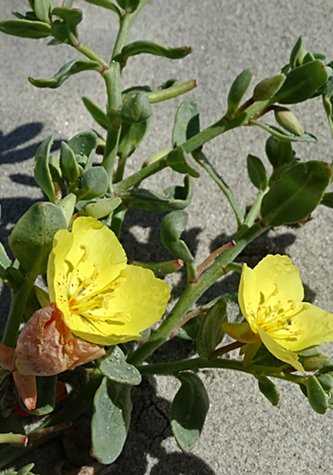The National Geographic Sea Bird, our home for the next two weeks, lay quietly at anchor within the shelter of Magdalena Island as the dawn light splayed across the distant dunes. The scenic shore beckoned, and shortly after breakfast the inflatable boats whisked us to a landing for a variety of walks. Photo groups meandered in search of subject matter and found all sorts of suitable material: sculpted sand, colorful plants, scenic vistas, and animal tracks.
Hikers strode across this narrow neck of the island to reach the Pacific. The terrain changed from soft to firm, and from barren to heavily vegetated. The tough red stems of sea purslane and the fibrous roots trapped the wind-blown sand. Delicate yellow sun cups and wild tomatillos, along with lavender blooms of satiny locoweed and sand verbena dappled the shrubbery. Tracks of mice, coyotes, and jackrabbits traced the recent activity of these adaptable creatures.
We passed ancient shell middens, evidence of humans who opened shells here long ago. Many made the trek all the way to the wave swept Pacific. Surprisingly, the waves looked reddish brown due to a filamentous alga. Vast deposits lay in mats near the water’s edge. Beaches are always filled with treasures just waiting to be found. Immense sand dollars dotted the upper beach, and a dolphin skull caught our attention as well. Back by the landing, a good-sized skeleton of a seahorse provided photo opportunities.
All too soon it was time to return to the ship. Before lunch there was an introduction to photography by our lead photo instructor.
We continued on our way, exited Magdalena Bay, and turned north into the open Pacific. We had an opportunity to watch a presentation on gray whales in anticipation of our visit to San Ignacio Lagoon for the next two days. As we traveled we searched for marine life. Several Bryde’s whales spouted and surfaced nearby. This fish-eating species of baleen whale has a pronounced dorsal fin that rises at a steep angle from the back. Frigatebirds drifted overhead and flocks of terns and shearwaters took wing at our approach. The sunny afternoon metamorphosed into sunset and, as darkness settled in, a crescent moon brightened beside brilliant Venus in the west.







